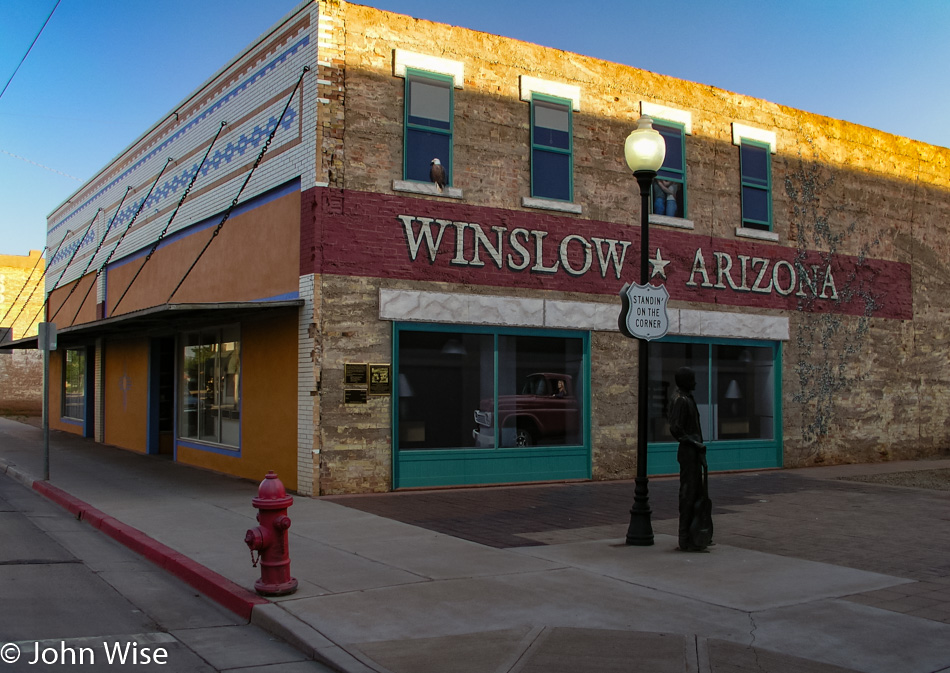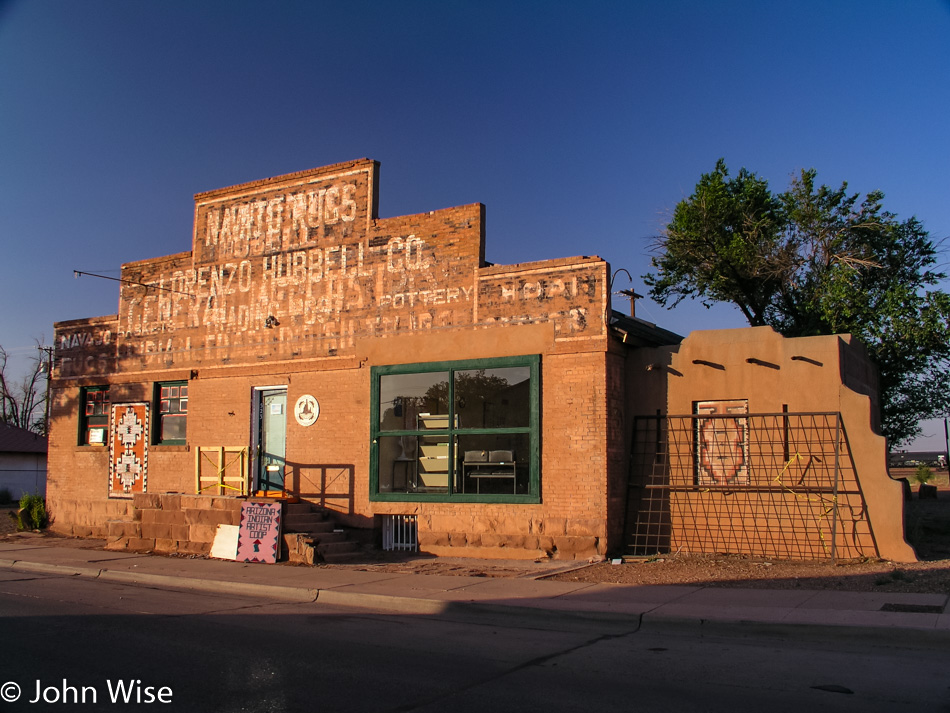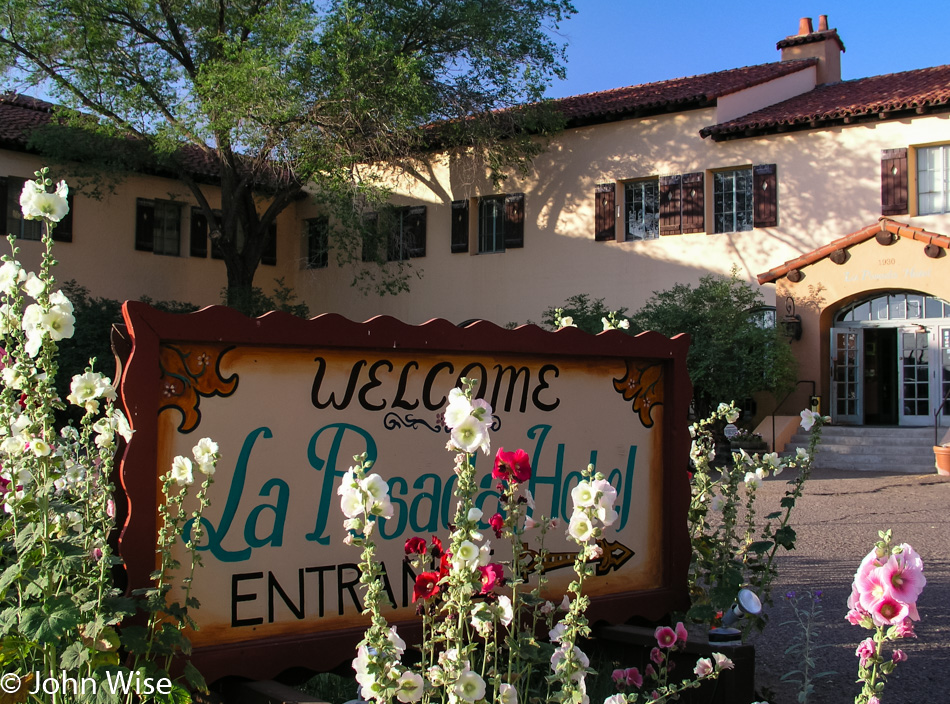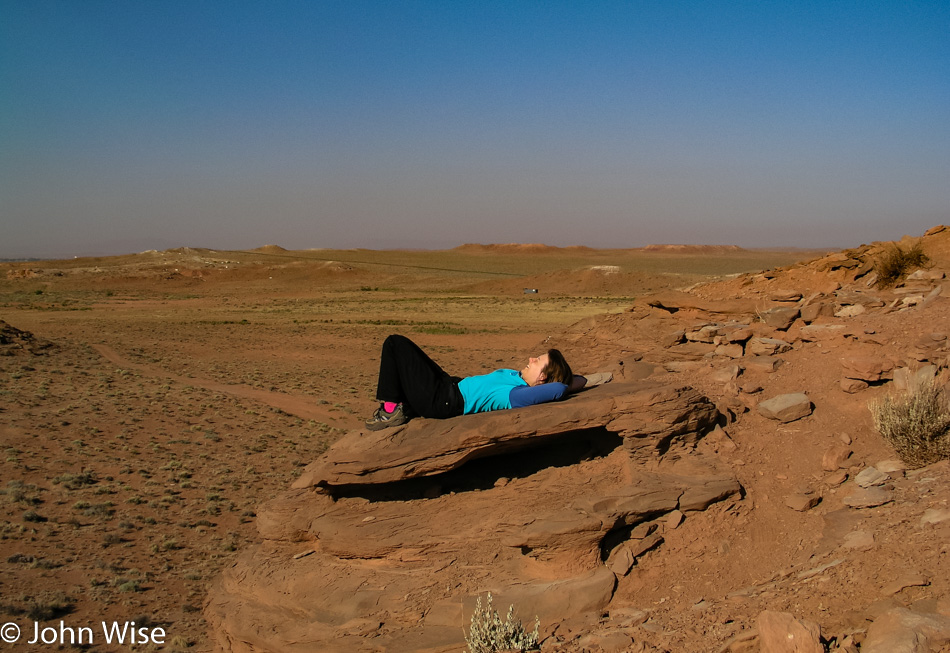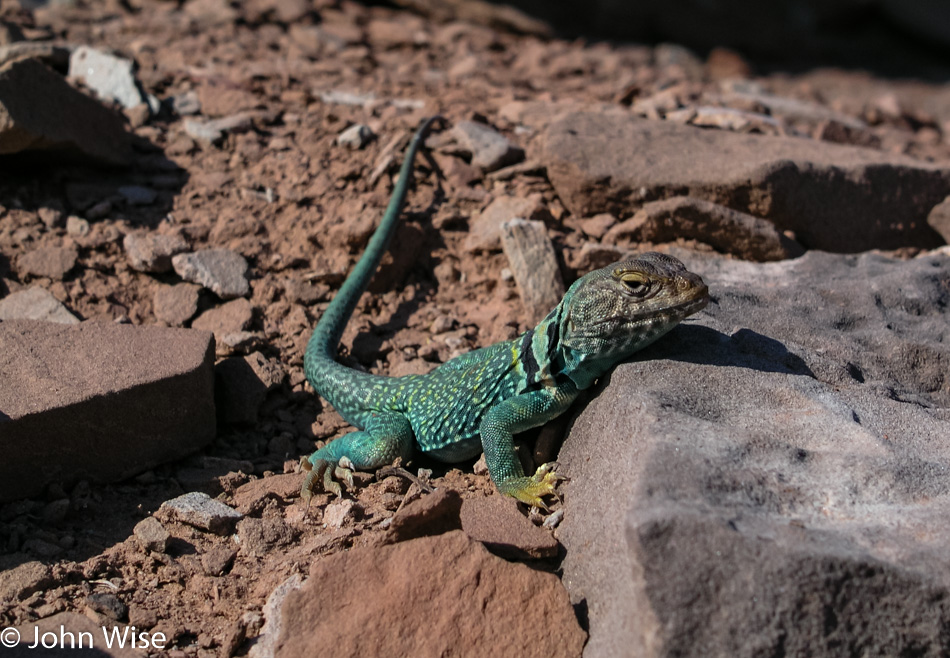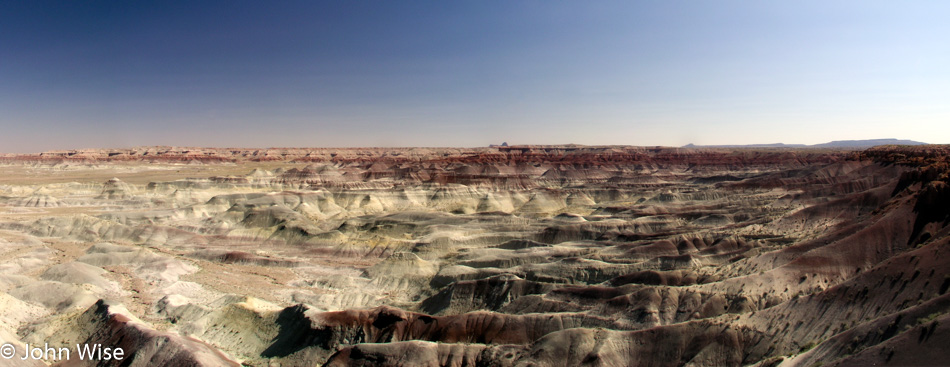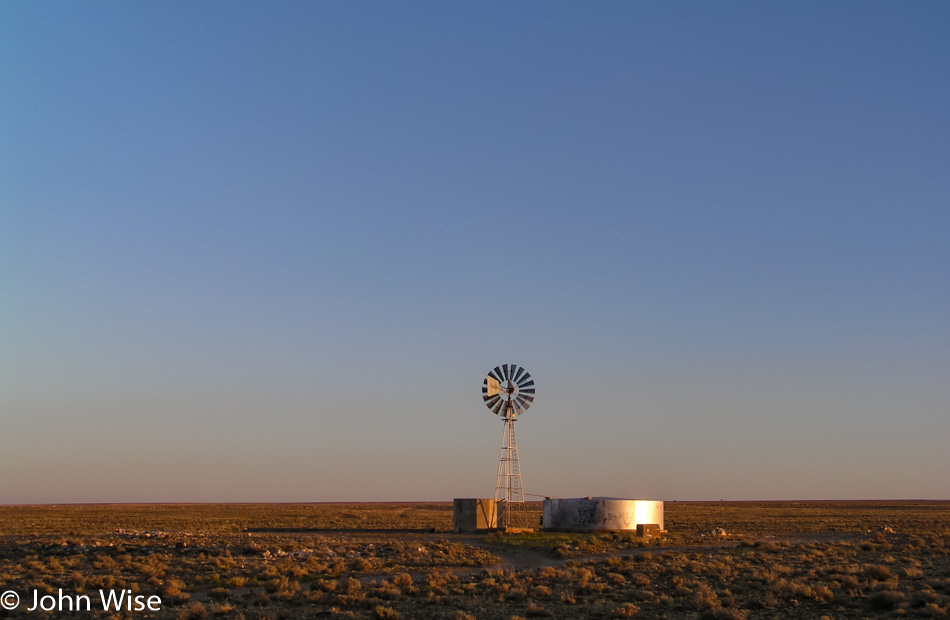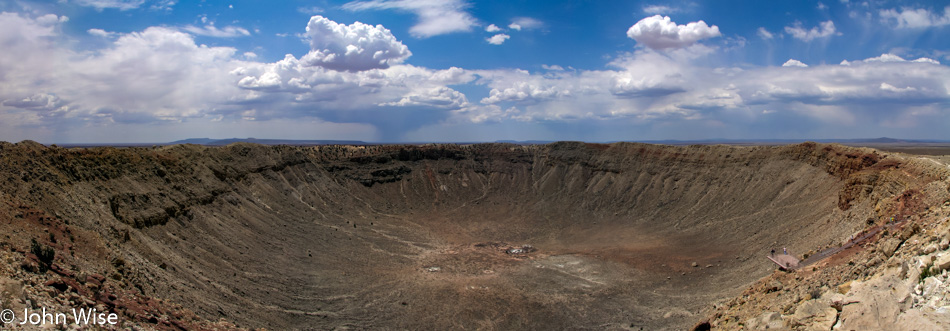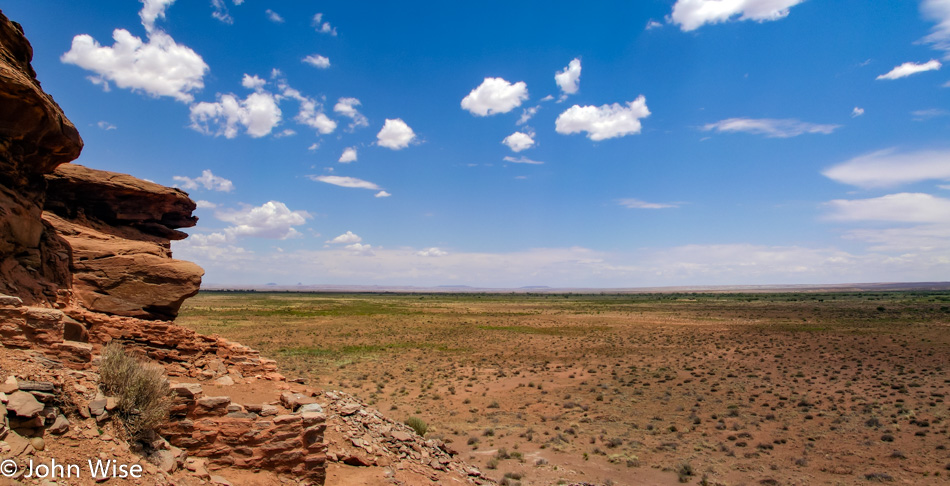
We’re back on the road at 7:00 a.m. This time, we head west on I-40 to the Leupp Corner turnoff, which should be Highway 2, and follow this road to Second Mesa. The very name of the people: “Hopi,” which is short for Hopituh Shi-nu-mu, translates to “The Peaceful People.” Hopi can also be translated as: “behaving one, one who is mannered, civilized, peaceable, polite, who adheres to the Hopi way.” I want to be Hopi, too.
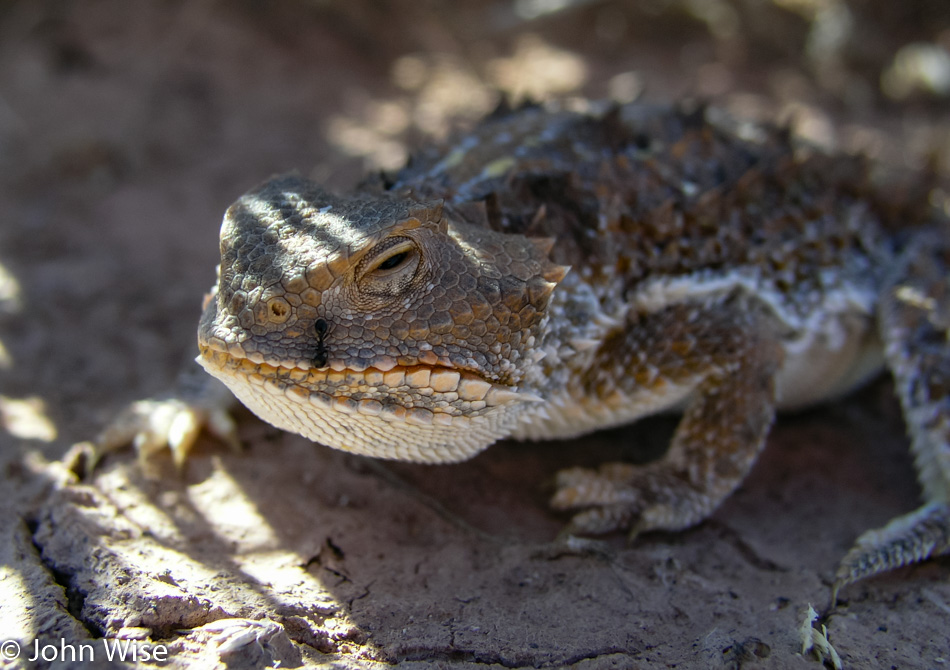
This drive is somehow more beautiful than Highway 87. It might be the rising red rock cliff faces that we approach from time to time or the enchanting lizard we spent 20 minutes trying to get a photo of. While visiting Walpi yesterday, there actually had been a Kachina doll carving that had spoken to Caroline, but at the time she had not told me. This morning, she mentioned this to me, and I suggested we go back and take another look.
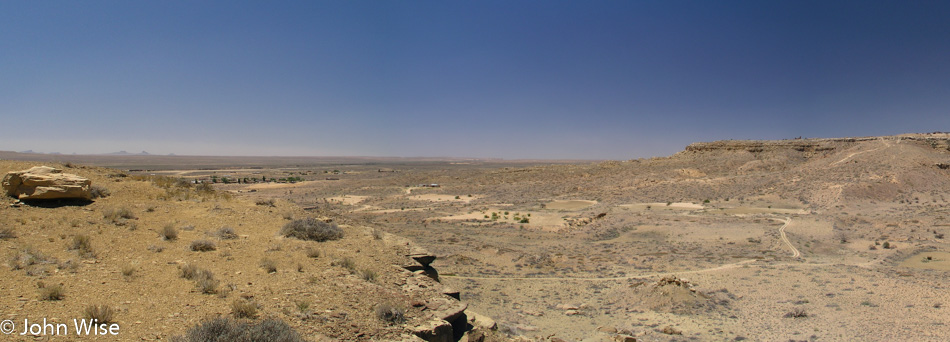
But before that, we are going back to Hotevilla, where we will have the opportunity to witness the Kachina Clowns and their antics before the Ogre Kachina enters the square. We have a nice chat where we are standing with a couple that is vacationing in the southwest and are at their first Kachina dance too. Driving from Wisconsin, this couple is as enamored as we are. The gentleman’s wife is a teacher, and she’s enthusiastic about returning home and trying to impart to her grade school class some of her excitement for the Hopi that she’s experiencing. It’s nice to meet other travel nuts. We leave shortly after they do, satisfied that we had such a fortunate opportunity.
Back at Walpi, we explained to the ladies in front of the visitor center that we wanted to buy a particular Kachina. Visitors normally have to wait for a tour, but the center was closed for a short break. We explained approximately where we’d seen the Kachina but couldn’t say exactly from whom; lucky for us; it worked this way. One of the ladies thought we must have been at “Grandmother’s” and told us we could walk back and find out – wow, what an honor. We were to walk over the Mesa to Walpi to find Grandmother, unescorted. Back past open doors and blowing screens, passing hundreds of years of history. We kick up the dust, and the dogs look up long enough to see we have no food in our hands. A Hopi man comes up behind us. We’re certain he’ll tell us to turn around that there’s been a mistake, but he has Kachina dolls in his hands and wants to interest us in his work. We explain we are looking for Grandmother, and he says okay before motioning us on.
A door opens and invites us to look at some pottery; we try to politely decline as we are focused on finding the Katsina from the day earlier. Just before the imposing sign telling us we are entering Walpi and that we must have a guide or permission, a young man signals for us to come over; we step inside his small one-room home to look at his work as a Katsina and explain that we are looking for a man who was at Grandmother’s, and so we continue the last 75 feet to Grandmother’s house. Although the door is open, the guy on the porch is not sitting where he had been yesterday; the house looks empty in its silence, with only the wind moving inside. We gently knock, figuring by now that our opportunity to find this artist has vanished for this weekend and so probably the chance to bring home with us the Kachina doll Caroline was endeared to.
A soft answer to our knock asks us to come in and then invites us to sit down. This is Olive Tony, who just might be the oldest inhabitant of the First Mesa and the entire Hopi Reservation. She tells us she is 93; others say 91. Doesn’t matter; this lady is strong, charming, and so incredibly gracious. Earlier in the day, she was curing a half dozen pieces of pottery on a fire of burning sheep dung when the winds whipped the flames too close to the pottery, thus making them less than perfect and hence not worth what they might have been. We explain who we are looking for and she informs us that his name is Hominy. We thank her, pass on the pottery, and head out. Returning to the car the last man we passed on the way to Grandmother’s hears we are looking for Hominy and seems enthusiastic that we are looking for him and wishes us luck. A few more steps on our return and a lady steps out and asks if we’d like to take a look at her and her husband’s pottery; we oblige and enter their home. To contain our excitement, it would be an understatement to say we would have liked to jump around like little children at the candy counter; our luck was dumbfounding us. As we entered her home, our host took her seat and gave us an informal lesson on how Hopi pottery is created, how the paint is made from the mustard plant, and how she prepares the yucca leaves for use as a paintbrush. All we can do is explain that we, unfortunately, aren’t in the position to purchase pottery today as we are trying to find a man by the name of Hominy and that we will be purchasing one of his Kachina dolls, again a sort of excitement that this is the person we are looking for and we are wished good luck again. On the way out the door, we spot a box of Piki bread and ask if it’s for sale; it is, so we stock up and leave.
Back at the visitor center, we tell the first vendor that we are looking for Hominy, and she exclaims that this is the father of her granddaughter and offers to track him down for us. The first phone call didn’t go through; cell reception is not always good up here. We gave her some change for the payphone, and she headed over to where a little girl joined her; after a few minutes, she came over and told us that Hominy was at home; he couldn’t find a ride up to First Mesa on this day. Hopi road instructions are great, not exactly what most of us can easily interpret, but we were getting closer to our goal, so we would try to follow the instructions that told us to go to where the road forks, go this way until you see a building over there and then go this way to the sandy area, then go this way over the hill, and you’ll come to his house.
Pulling out, we get a knock at the window; it’s our guide from yesterday; she says that the girl who had been near the phone was Hominy’s daughter and that her dad wondered if we could bring the girl with us with the added benefit she could guide us to his house – bingo. We would never have found this house without our young guide and the help of everyone up on First Mesa, but here we are in Keams Canyon, about to meet Hominy of Bear Clan. Again, we are invited into a Hopi home; our inclination is to bow down in gratitude that these people are so welcoming. After introductions, no time is lost getting to business, and as luck would have it this day, the Kachina doll Caroline had wished for was still in his possession. Sure enough, this was a beautiful carving from the root of a cottonwood tree that was shaped into such a beautiful creation. Sitting atop is the Snow Maiden, below is the Sun Maiden, under her is the Longhair Maiden, and below that is the Yellow Corn Maiden. Hominy explained that he felt this was a representation of the four seasons. A big thank you to this Katsina and an extra thank you to his daughter for helping us find her father and we were merrily driving east to the Navajo Reservation to finish our day.
But something happened as we were leaving the Hopi Reservation; we couldn’t help thinking of Grandmother, another U-turn. For the third time in a couple of days, we are once again pulling up on First Mesa. A thank you again to the young girl’s grandmother for helping us find Hominy and the explanation that we wanted to visit Grandmother again because we had decided to pick up a piece of her pottery. With a beeline precision and a growing familiarity, we are within moments of knocking on Olive Tony’s door; again, we are welcomed to step inside. A dozen thank you’s are offered to this kindly old Hopi lady, and we choose a little vase before departing, one that was ‘ruined’ by the firing the day earlier. Walking out the door, Olive asks if we could take her down the hill to the grocery as visitors have been few and far between; plus, she had recently gotten her retirement/government check; they come once a month, $20 every 30 days! Wow, you live to nearly 100 years old, and you are one of the links to a great culture almost destroyed by modernization, and this is how you are cared for. If it weren’t for the honor of being able to help this lady, it might have been a sad day, but nothing was going to stand in the way of this fortunate weekend. We took Grandmother down the mesa to the store, she picked up a few essentials, we slipped the grocer payment, she cashed her check and we trudged back up the mesa for the fourth and last time this weekend. Olive offered us a small clay dish in gratitude; we tried to let her know that nothing more than a thank you was necessary, but she insisted, and so we were now in possession of a second beautiful little piece of handwork from this most gracious of ladies. She tells us as we are leaving that she is like a plant that has grown up and is now getting closer to the earth before returning. We don’t know what her life had been like before this day, but today, she helped make these wonderful moments on Walpi a better one for two strangers. A day looking out on America to better look back on ourselves.
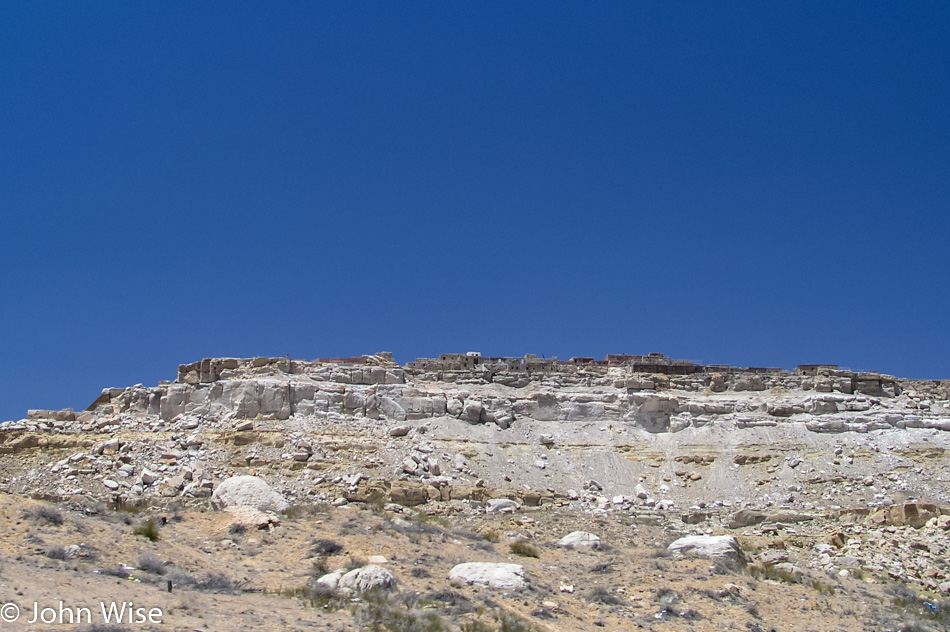
With such an amazing experience locked in our hearts, it was time to wander out.
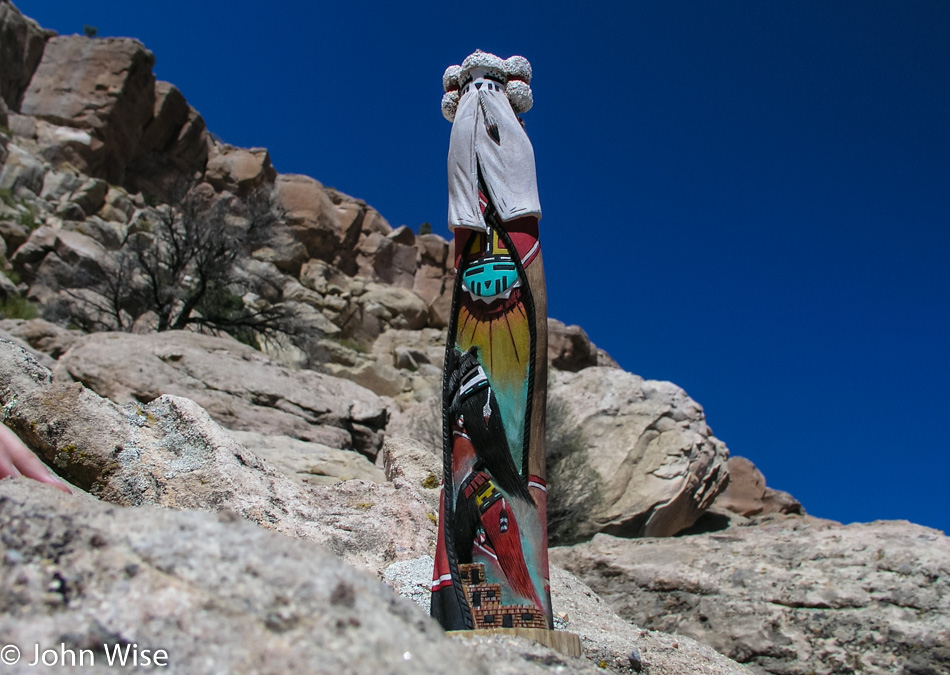
Then, when it felt right we pulled over and took the Kachina and placed it on the rocks where we could photograph it while still on Hopi lands. Snow Maiden, Sun Maiden, Longhair Maiden, and Yellow Corn Maiden are represented, and they are perfectly beautiful in our eyes.
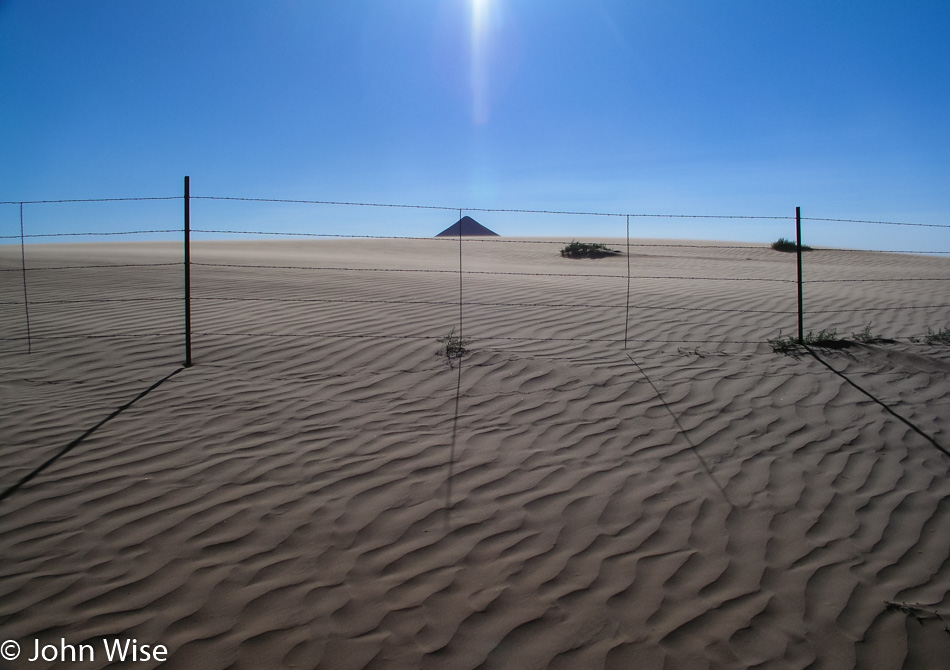
Hospitality in the Hopi Nation is like this sand here: abundant and nearly infinite.
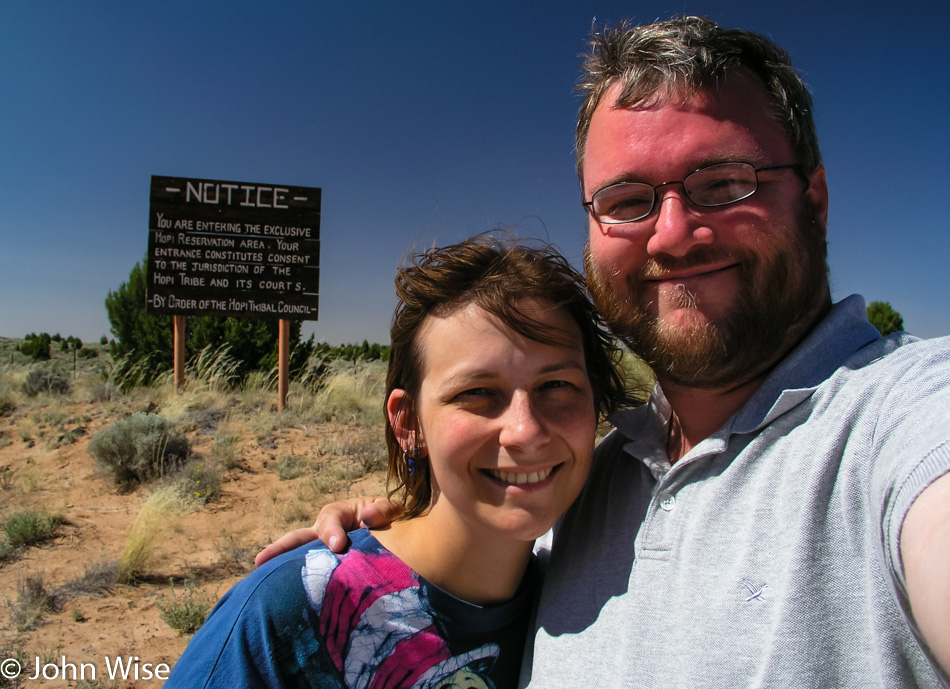
Thank you, Hopi People, for welcoming us to your lands and helping create such a wonderful weekend.
